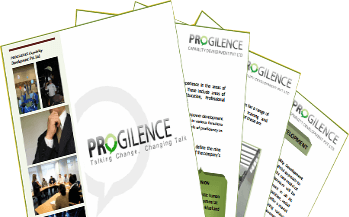Funnelling through to the top – planning progression for senior managers

The nature of hierarchies in most modern organisations is pyramidal which tapers upwards, and those who are in senior management positions realise the further they go the fewer position ahead for them that they can make it to. So, while the fact that they have made it to senior positions makes them confident in their own abilities they realise that to move ahead they either have to demonstrate a markedly differential ability compared to their peers, particularly that which is valuable to top management; or they have to broaden their opportunities by looking into other organisations.
It is no surprise then that as their peers move ahead of them at this stage, they tend to view this negatively and often complain of chicanery, bias, faulty selection processes, bad luck and ineptitude of top management as various reasons for their lack of progression. The accompanying lack of motivation and disappointment often results in grievances that are directed towards the organisation and their peers. This leads to under and undesired performance, often along with a voluntary or involuntary exit from the company. It is also quite common to see senior managers acquire leadership roles, sometimes thrust in the roles prematurely due to unforeseen circumstances and sometimes after being considered as overdue after long wait and anticipation, and yet many of these managers are not able to cope with the role requirements in terms of performance results and expected behaviour, skills, and capabilities.
Most good companies realise this reality and plan ahead to avoid some of these negative consequences. They realise if the incumbents have made it thus far, there are recognisable positives in the skills sets of these employees; and therefore, retention is often preferred for reasons of talent and fitment apart from the cost savings that it usually entails. They also know that as people move further up the hierarchy, they need newer skill-sets and capabilities along with different perspectives; thus they invest in talent development activities and begin to develop a leadership pipeline for critical roles, a key component of succession planning. Companies commonly also create new roles for retaining talent and key personnel.
Senior managers are often better off recognising the challenge ahead of time. Even if the company does not have a formal succession planning and talent development programme, they can commence work on creating a development and progression plan for themselves which involves capability and perspective development for leadership roles.
- The pitfall for most senior managers is when they begin to find excuses outside of themselves and begin to feel helpless in their quest for progression and recognition.
- A second pitfall is when they treat this as a competitive challenge, seeing them pitted against their peers whom they need to out-manoeuvre to move ahead.
- The third pitfall is when they believe that they do not need any feedback from others in doing so, believing they are the ones who best know what they need, and other people’s opinions are not worthy to consider.
- Ironically the fourth pitfall is when they start according more than due importance to other people’s opinions of themselves, than trying to use it for what it is. Yes, this is the challenge, to balance the third against the fourth, there is no secret formula to arrive at a perfect assessment, but there are things one can do to make the feedback more objective.
The most intelligent managers’ of course focus on finding what stands in their way of being recognised as the obvious and deserving choice for getting the chance to progress and look at aspiration balanced with fitment (which considers focus and capabilities). They also factor in the element of chance and uncertainty in everything and don’t necessarily find reasons to be out of harmony with themselves or others. They continue their journey reflecting on whether and which things need to be done or done differently to achieve the results they want and go on to work on them.
Usually, to arrive at this mind frame, development of the requisite focus and more holistic capabilities requires support, guidance, learning, reflection, discipline, mindfulness, feedback and practice.
Companies focused on developing their talent pool ensure their valued employees are developing and preparing for future roles with enthusiasm and realistic expectations. They also would like to provide the right employees the opportunities where they can fulfil aspirations and derive best performances.
As the dynamic world continues to churn out new information and perspectives, companies not only want to pass on to their best managers relevant historical knowledge, recognised and benchmarked skills to support them, but they also want managers to acquire and develop new and more holistic perspectives and capabilities that allow them to operate in a realm where they can produce value at the dynamic edges of uncertainty and emerging realities.
Some of the learning and development interventions focused at senior management include assigning them to specific programmes and projects that aim at helping them learn and practice leadership on the job, build perspective of the business area context and to know and work with other members in leadership roles. They are often assigned to greenfield projects and exploratory areas that can assist in developing newer capabilities and perspective. They may also be assigned to working with specific partner organisations which conjoins the development of leadership and strategic collaborations.
Companies also engage external agencies that work with them to identify other opportunities that can facilitate specific areas of capability and perspective development apart from using them to manage and/or evaluate the overall development process. Some of these may be workshops and assignments which address specific areas and others that address broader needs. Some of these include such as those focused on Leadership, Scenario Planning and Visioning, Complexity and Systems Thinking, Personal Presentation, Etiquette, and Communication, etc. while there are other areas of focus maybe function, industry or sector specific. A key area of focus for a large number of organisations in the increased globalised work environment is cultural competence. Several organisations now include working and proving oneself in a new cultural environment before they are considered for leadership roles.
Coaching and mentoring arrangements are also used extensively to support the development process. These arrangements could be set-up internally or with the help of external agencies or specific individuals the company holds in regard. In addition, these may be used prior to the selection and promotion or may be on-going. Apart from positively focused development, it is also known that some organisations work with senior managers earmarked for higher roles to address areas of concern in their behavioural repertoire. These may be focused on habits that may not align with the organisations values and image or may be embarrassing for the company and the person that could publicly or within the organisation potentially cause loss of respect for the individual and hamper their achievement of results. These again may require counselling, coaching and mentoring services apart from a dedicated plan to address the specific concern.
The best companies ensure that the development plan is holistic, has a high degree of personalisation and is objective. This generally requires the inclusion of various participants in the planning and deployment of the programme including, top management, immediate and preceding line managers, other team members, In-company HR, and talent development teams, external agencies or support personnel and of course the incumbent.
The more determined people are to funnel through the leadership development pipeline, the more the need to ensure that they prepare a plan with the best chance to succeed and that is a high engagement and high involvement endeavour, of course the best time to start on that is now




